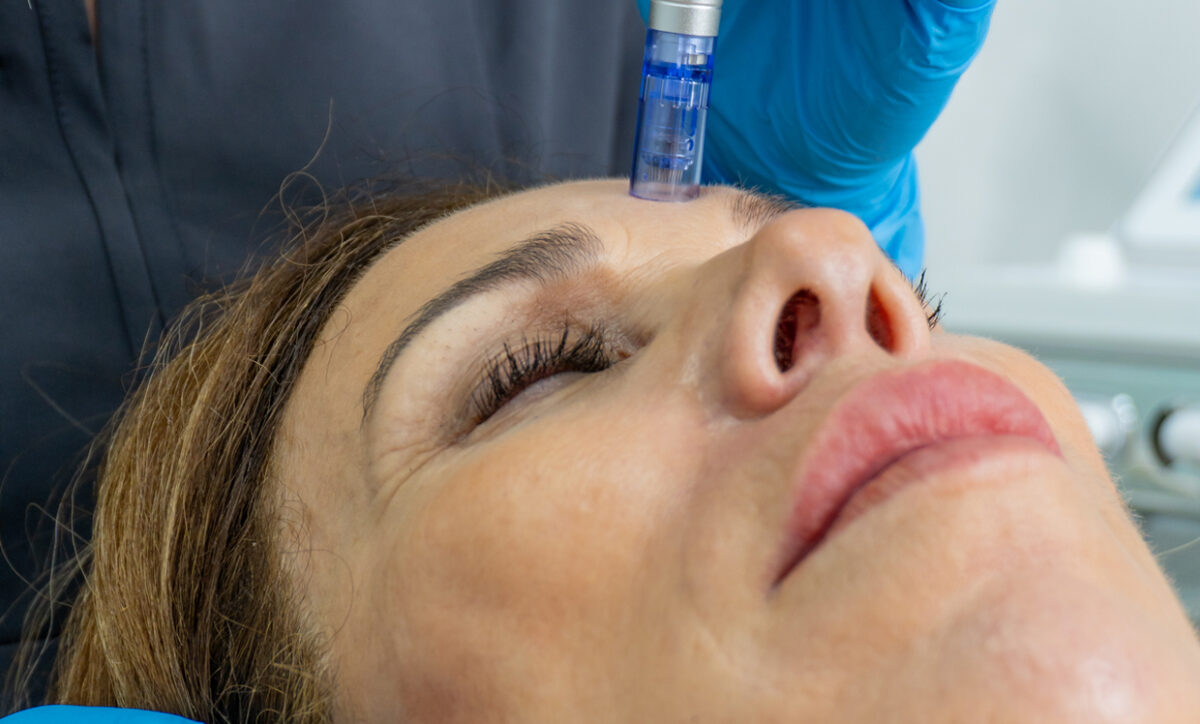Hyperpigmentation is a common skin concern that affects people of all ages and skin types. It appears as dark patches or uneven skin tone caused by an excess production of melanin—the pigment responsible for skin color. This condition can result from various factors such as sun exposure, acne scars, hormonal changes, or inflammation. While topical treatments and chemical peels can help fade dark spots over time, many individuals are now turning to advanced skin rejuvenation methods for more effective results. One of the most promising procedures today is Microneedling in Dubai, a cutting-edge treatment that helps improve pigmentation irregularities by promoting natural skin renewal from within.
How Microneedling Targets Hyperpigmentation
Microneedling works by using a device fitted with ultra-fine needles to create micro-injuries on the skin’s surface. These microchannels stimulate the body’s natural healing response, triggering collagen production and increasing cell turnover.
For hyperpigmentation, this process helps by:
- Breaking up clusters of excess pigment, allowing new, evenly toned skin to replace discolored areas.
- Encouraging the shedding of damaged skin cells, revealing brighter and smoother layers underneath.
- Improving absorption of brightening serums, which enhances the effects of ingredients like vitamin C or niacinamide.
This gentle yet effective approach helps fade dark spots while improving overall skin texture and radiance.
Why Microneedling Is Effective for Uneven Skin Tone
Hyperpigmentation often develops when melanin accumulates unevenly in the skin. Microneedling helps distribute this pigment more evenly by promoting fresh, new skin cell formation. Unlike laser treatments, which may sometimes cause post-inflammatory pigmentation in darker skin tones, microneedling is suitable for all skin types and tones because it does not rely on heat or light energy.
This makes it an excellent option for individuals with sensitive or melanin-rich skin who wish to correct pigmentation safely and naturally.
Types of Pigmentation Microneedling Can Treat
Microneedling can be beneficial for several forms of pigmentation, including:
- Post-inflammatory hyperpigmentation (PIH): Dark marks that appear after acne or injury.
- Melasma: Hormonal pigmentation, often seen on the cheeks, forehead, and upper lip.
- Sunspots or age spots: Caused by prolonged exposure to ultraviolet rays.
- Freckles or uneven tone: General discoloration that affects the overall appearance of the skin.
By targeting the deeper layers where pigmentation originates, microneedling helps create a more uniform complexion over time.
The Procedure: What to Expect
The microneedling process typically begins with cleansing and applying a topical numbing cream to minimize discomfort. The practitioner then moves the microneedling device evenly across the skin, allowing the fine needles to create thousands of microchannels.
The treatment usually lasts between 30 and 45 minutes, depending on the area being treated. Afterward, the skin may appear slightly red or warm—similar to a mild sunburn—but this usually subsides within a day or two. Over the following weeks, the skin gradually becomes clearer, brighter, and more balanced in tone.
Post-Treatment Care for Pigmentation Concerns
Proper aftercare is crucial to achieving the best results from microneedling. Since the skin is more sensitive immediately after treatment, it’s important to follow professional guidance, such as:
- Avoiding direct sunlight for a few days.
- Using a broad-spectrum sunscreen daily.
- Applying gentle, hydrating serums to support healing.
- Avoiding harsh exfoliants or acids for at least a week.
This helps the skin heal effectively while preventing any potential irritation or post-treatment pigmentation.
How Soon Do Results Appear?
Many people start noticing visible improvement in pigmentation after a few weeks as new collagen forms and the skin regenerates. However, the number of sessions required varies depending on the type and depth of pigmentation.
For mild discoloration, two to three sessions may be enough, while more persistent pigmentation such as melasma may require several treatments spaced a few weeks apart. The results are cumulative, meaning the skin continues to improve with each session.
Benefits for Pigmentation and Skin Health
Beyond improving pigmentation, microneedling also offers long-term skin benefits, including:
- Enhanced firmness and elasticity due to collagen stimulation.
- Reduced appearance of pores and fine lines.
- Improved texture and smoother skin surface.
- Healthier, more radiant complexion over time.
These combined effects make microneedling a comprehensive rejuvenation treatment that not only corrects discoloration but also improves the overall quality of the skin.
Why Choose Microneedling for Pigmentation
Microneedling stands out as a safe, effective, and versatile solution for pigmentation issues because it:
- Promotes natural cell turnover.
- Works for all skin tones.
- Enhances absorption of brightening products.
- Offers visible results without harsh side effects.
Unlike topical creams that take months to show minimal improvement, microneedling works from within, addressing the root cause of pigmentation irregularities for a more radiant, even complexion.
Combining Microneedling with Other Treatments
Microneedling can be enhanced when combined with other pigmentation-focused treatments. Some clinics use vitamin C infusions, growth factors, or platelet-rich plasma (PRP) to boost skin renewal. These combinations not only help lighten dark spots faster but also improve overall skin health and resilience.
When performed by a skilled practitioner, these combinations ensure the skin is evenly treated and free from post-inflammatory responses.
Microneedling Dubai continues to be one of the most popular solutions for hyperpigmentation and uneven skin tone. The city’s skincare professionals often customize the procedure for each client’s skin type, ensuring safe and effective results that align with local environmental conditions, such as heat and sun exposure.
Conclusion
Microneedling is a highly effective treatment for improving hyperpigmentation and achieving a clearer, more balanced complexion. By stimulating collagen production and encouraging skin renewal, it helps fade dark spots while enhancing overall radiance.
Safe for all skin types and tones, this non-invasive treatment provides long-term results when performed by experienced professionals and paired with proper skincare maintenance.






Comments